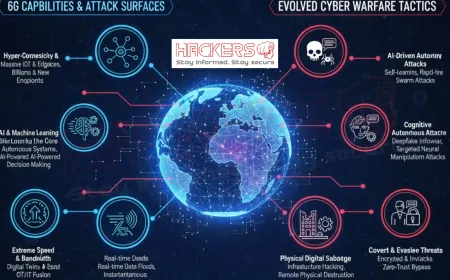What Makes Passwordless Authentication Safer Than OTPs?
You are at the airport. Your phone buzzes. A text says: “Your bank code is 483920.” You did not request it. Someone is trying to break in. You ignore it. Ten minutes later, your account is empty. This is not bad luck. This is OTP theft, one of the most common hacks today. One-Time Passwords, or OTPs, were supposed to make us safer than regular passwords. But they have become the weak link. Now, a new way is rising: passwordless authentication. No codes. No texts. Just you, your device, and a secure handshake. It is faster, simpler, and much harder to hack. This blog explains, in plain words, what passwordless means, why OTPs fail, and how going passwordless protects you better. The future of login is here. And it does not need a password.

Table of Contents
- Introduction
- What Is OTP and How Does It Work?
- The Hidden Problems with OTPs
- What Is Passwordless Authentication?
- How Passwordless Authentication Works
- Passwordless vs. OTP: Side-by-Side
- Real-World Wins and Fails
- Who Is Using Passwordless Today?
- How to Get Started with Passwordless
- The Future of Login Security
- Conclusion
- Frequently Asked Questions
What Is OTP and How Does It Work?
OTP stands for One-Time Password. It is a temporary code, usually 4 to 6 digits, sent to your phone or email after you enter your username and password.
- You log in with username and password
- Site sends OTP via SMS, app, or email
- You enter the code within 30 to 60 seconds
- Login completes if code matches
It was designed to add a second layer, called two-factor authentication (2FA). The idea: even if someone steals your password, they need your phone too.
The Hidden Problems with OTPs
OTPs sound safe. But they are not.
- SMS interception: hackers use SIM swapping or SS7 flaws
- Phishing: fake sites ask for your OTP in real time
- Lost phones: anyone with your device gets the code
- Delay and failure: no signal, no login
- User error: sharing OTPs with “support” scammers
- Cost: banks pay for every SMS sent
Microsoft reports 99.9% of account compromises involve stolen passwords or OTPs. NIST now says SMS OTP is insecure.
What Is Passwordless Authentication?
Passwordless means logging in without typing a password or OTP. You prove who you are using something you have (like a phone) and something you are (like a fingerprint).
- Biometrics: fingerprint, face, voice
- Hardware keys: YubiKey, Titan Security Key
- Magic links: click email to log in
- Push notifications: approve login on your phone
It uses public-key cryptography. Your device holds a private key. The server has the public key. They handshake securely. No secrets travel.
How Passwordless Authentication Works
It is simpler than it sounds.
- Step 1: you register with a device (phone, laptop, key)
- Step 2: device creates a key pair (private stays locked, public sent to server)
- Step 3: to log in, server sends a challenge
- Step 4: device signs it with private key (needs your PIN or biometric)
- Step 5: server verifies with public key. Login approved
No codes. No texts. Nothing to intercept.
Passwordless vs. OTP: Side-by-Side
Here is the truth in black and white.
| Factor | OTP (SMS/Email) | Passwordless (FIDO2/Passkey) |
|---|---|---|
| Phishing Resistant | No. Code works on fake sites | Yes. Key tied to domain |
| Interception Risk | High. SMS, email, SIM swap | None. No code sent |
| User Experience | Slow. Wait, type code | Fast. One tap or scan |
| Cost to Provider | High. SMS fees | Low. No messages |
| Works Offline | No. Needs signal | Yes. Local auth |
Real-World Wins and Fails
Proof is in the results.
- Google: 100% of employee phishing stopped with security keys
- Microsoft: passkeys reduced support calls by 60%
- PayPal: magic links cut fraud by 85%
- Indian bank: lost $1.3M to OTP forwarding scam in 2024
- U.S. credit union: SIM swap drained 200 accounts in one week
FIDO Alliance says passwordless logins are 4x faster and 10x more secure.
Who Is Using Passwordless Today?
Big names lead the way.
- Google: passkeys for all accounts
- Apple: Face ID and Touch ID with iCloud Keychain
- Microsoft: Windows Hello and passkeys
- Amazon: magic links and biometrics
- Banks: DBS, HSBC, Wells Fargo offer FIDO2
- Governments: UK, Singapore use passkeys for e-services
Over 150 million passkeys created by 2025.
How to Get Started with Passwordless
You can switch today.
- Step 1: check if your sites support passkeys (Google, Apple, Microsoft do)
- Step 2: buy a hardware key (YubiKey $25 to $55)
- Step 3: enable biometrics on your phone and laptop
- Step 4: turn off SMS 2FA where possible
- Step 5: use a password manager that supports passkeys (1Password, Bitwarden)
- Step 6: train family and team to verify logins
Most phones made after 2020 support FIDO2.
The Future of Login Security
Passwords and OTPs are dying.
- Passkeys everywhere: standard by 2030
- AI biometrics: gait, heartbeat, typing patterns
- Zero trust: no login, just continuous verification
- Quantum-safe keys: ready for future computers
- Global standards: FIDO, W3C, ISO lead the way
Apple, Google, and Microsoft aim to kill the password by 2030.
Conclusion
OTPs were a step forward from passwords. But they are now a step back. They are slow, costly, and easy to steal. Passwordless authentication is the real upgrade. It is faster, cheaper, and nearly impossible to phish or intercept. Using your face, finger, or a secure key, you log in with confidence. No codes. No texts. No weak links. The world is moving to passwordless. Google, Apple, banks, and governments are leading. You should too. Start with one account. Enable passkeys. Get a security key. Turn off SMS 2FA. The safest login is the one you do not have to remember. The future is passwordless. Make it yours.
Frequently Asked Questions
What is passwordless authentication?
Logging in without a password or OTP, using biometrics, hardware keys, or magic links.
Is passwordless really safer than OTP?
Yes. OTPs can be stolen. Passwordless uses cryptography tied to your device.
Can someone steal my fingerprint?
No. Biometrics stay on your device. Only a math version is used.
What if I lose my phone?
You need a backup: another device, hardware key, or recovery code.
Do I need a new phone for passkeys?
No. Most phones from 2018+ support FIDO2 and passkeys.
Can hackers phish passwordless logins?
No. The key only works on the real website domain.
Is SMS OTP still safe?
No. NIST and FBI say avoid it. Use app or hardware instead.
What is FIDO2?
A standard for passwordless login using public-key cryptography.
Can I use passwordless at my bank?
Many allow it. Check for “passkey” or “security key” options.
Are magic links safe?
Safer than OTP. But use with trusted email and short expiry.
Do I still need a password manager?
Yes. It stores passkeys, recovery codes, and legacy passwords.
Can businesses use passwordless?
Yes. Microsoft, Google Workspace, Okta support it enterprise-wide.
Is face recognition secure?
Yes on modern devices. Apple Face ID and Windows Hello use 3D depth.
What is a hardware security key?
A USB or NFC device like YubiKey that holds your login credentials.
Can I use passwordless on old websites?
Not yet. But major sites are adding support fast.
Does passwordless work offline?
Yes for local apps. Web logins need internet once to verify.
Will passwords ever go away?
Eventually. Passkeys are the replacement. Start transitioning now.
Is passwordless expensive?
No. Biometrics are built-in. Hardware keys cost $20 to $50.
Can I recover a passwordless account?
Yes. Set up backup keys, phones, or recovery codes during setup.
Where do I begin?
Enable passkeys on Google. Buy a YubiKey. Turn off SMS 2FA.
What's Your Reaction?


























































